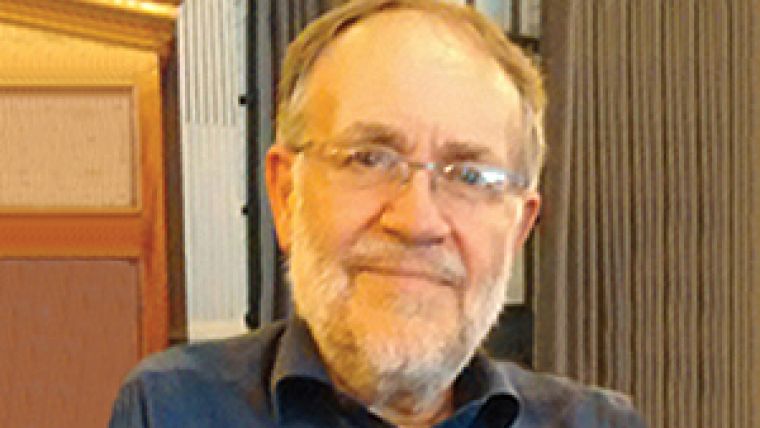Read it How You Like But Are You Taking it in?
This article was originally published in Geomatics World.
The rise of digital reading poses challenges for publishers. It seems all too easy to go digital, but are readers still comprehending as much?
How are you reading this copy of GW? Are you holding the printed copy in your hand or are you peering at it on the screen of a tablet or laptop? Perhaps you’ve viewed it online, downloaded it and printed a PDF of the page.
It’s not only the way we view printed material that’s changing. Not all children are learning to write today in the way that generations before did. I read recently that the teaching of cursive (joined up) writing is on the wane as more and more teaching involves tablets and other digital devices. I’ve also read that those wunderkinder of Silicon Valley are insisting that their kids get a proper education with books and joined-up writing. Interesting.
So a word of caution to those who read only on screen. I am currently reading Naomi S Baron’s Words Onscreen. Her research finds that digital reading is reshaping our understanding of what we’ve read. Tests have found that those who use e-readers retain less than printed book readers, while those who read and scan text online have been found to adopt an “F” shaped pattern of reading, scanning from left to right but increasingly reading less of what’s to the right, as they rapidly descend the page. I hope I can persuade you to pay more attention than the scan readers, for this is a worthwhile issue of GW packed with something for just about everyone engaged in geomatics. Please read it wherever and whatever you like and just remember that the printed version comes in a handy letterbox-friendly package that doesn’t need an internet connection or batteries. Let’s see what we have.
Pendulums Just Swing Well for Some
Nick Day, whose writing skills and lively curiosity drive him into visiting all sorts of unusual locations and recording the results in both word and image, has recently been to Trieste in Italy near the border with Slovenia where he discovered a vast cavern in which were located geodetic pendulums, whose sensors and recording equipment can detect earthquakes on the other side of the globe. Big geodesy indeed. Turn to page 32 to read Nick’s account.
Stephen Ward argues that the future for surveyors in the growing world of BIM is to focus on the bigger picture and the opportunities it offers through BIM consulting (page 12). Meanwhile, a word of caution on BIM software is sounded by RICS Geomatics Professional Group chair Chris Preston, page 09; and Carl Calvert examines some of the legal issues around cloud computing (page 36).
Turning to the wet world and hydrographic surveys, with the rise in the type of geospatial sensors now installed aboard survey vessels it is essential to know their exact positions as accurately as possible. Stuart Leakey and Geoff Wharton explain how this has been done for a Port of London survey vessel, using total station, laser scanner and metrology devices like the Leica Tracker and T-Probe.
Two reports highlight the lightest technology launches from Hexagon and its Leica Geosystems subsidiary. There are indeed some exciting new gismos, including a DISTO that’s almost a total station. As Richard Groom observes, ‘a rather useful piece of equipment’. In the next issue, we shall be looking at the latest launches from arch-rivals Trimble and Topcon, as they hold their roadshows and we report from the Intergeo exhibition in Stuttgart.
Struggling with Geometry
We’ve also taken a look at a remarkable construction taking place in Barcelona that began more than a century ago and involves some of the most challenging geometry imaginable. The Catalan architect Antoni Gaudi’s Sagrada Familia is one of Spain’s top tourist attractions but whilst you may marvel at its soaring, spiralling spires, surmounted by bowls of fruit and nuts, you will probably need to be a surveyor or engineer to appreciate the incredible construction difficulties this presents. Although incomplete, the building is already a UNESCO world heritage site.
Turn also to the News columns (page 07) to learn about an extraordinary Cyark project backed by Topcon to document what must be one of the oldest hydroelectric power plants in the world, and in Japan. Here too there are plans to get the plant identified as a world heritage site.
Lastly, I am able to publish a response from the TSA (page 08) regarding Richard Groom’s review of the TSA’s Briefing Note on Calibration published in the last issue.
This article was published in Geomatics World September/October 2015

Value staying current with geomatics?
Stay on the map with our expertly curated newsletters.
We provide educational insights, industry updates, and inspiring stories to help you learn, grow, and reach your full potential in your field. Don't miss out - subscribe today and ensure you're always informed, educated, and inspired.
Choose your newsletter(s)
























